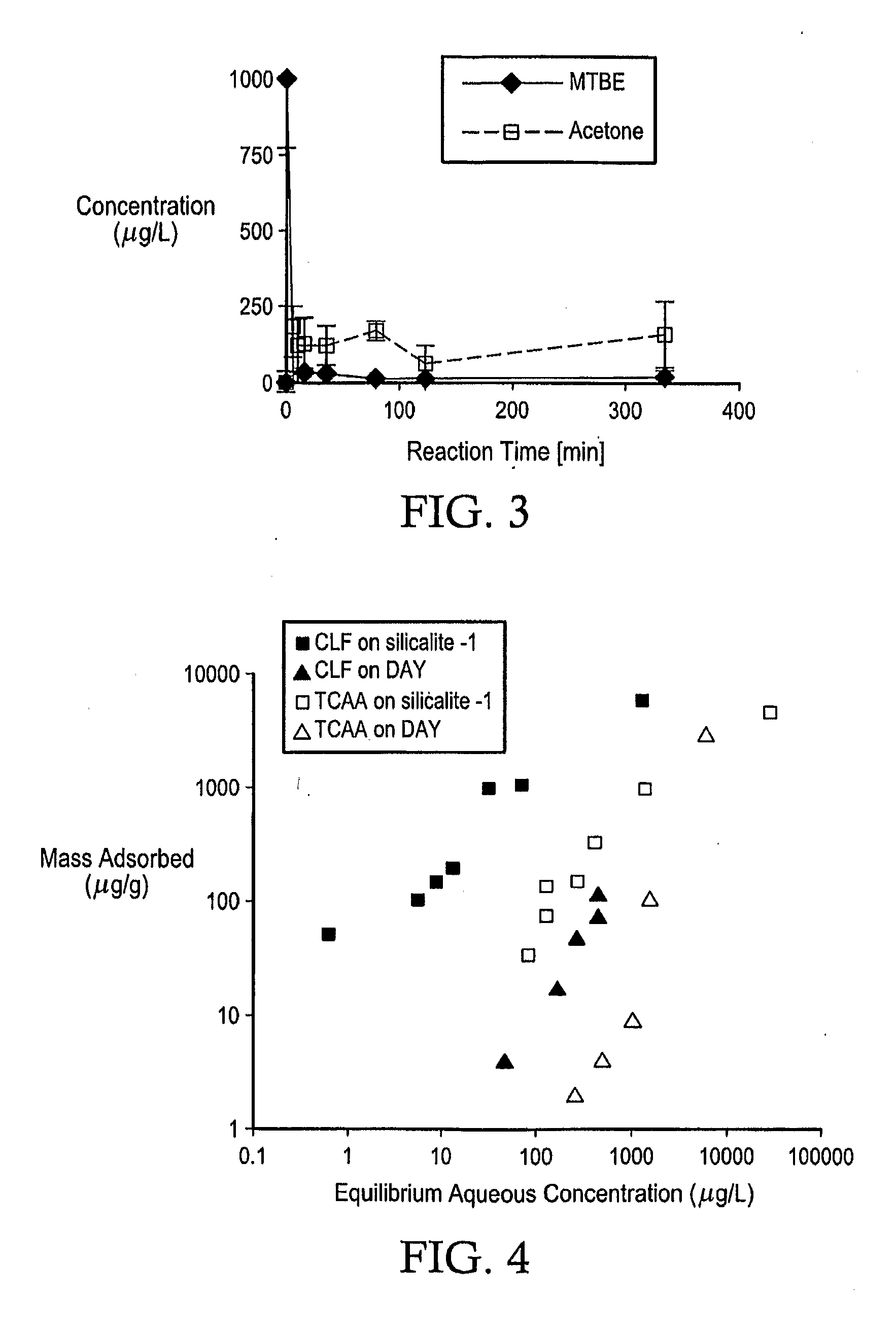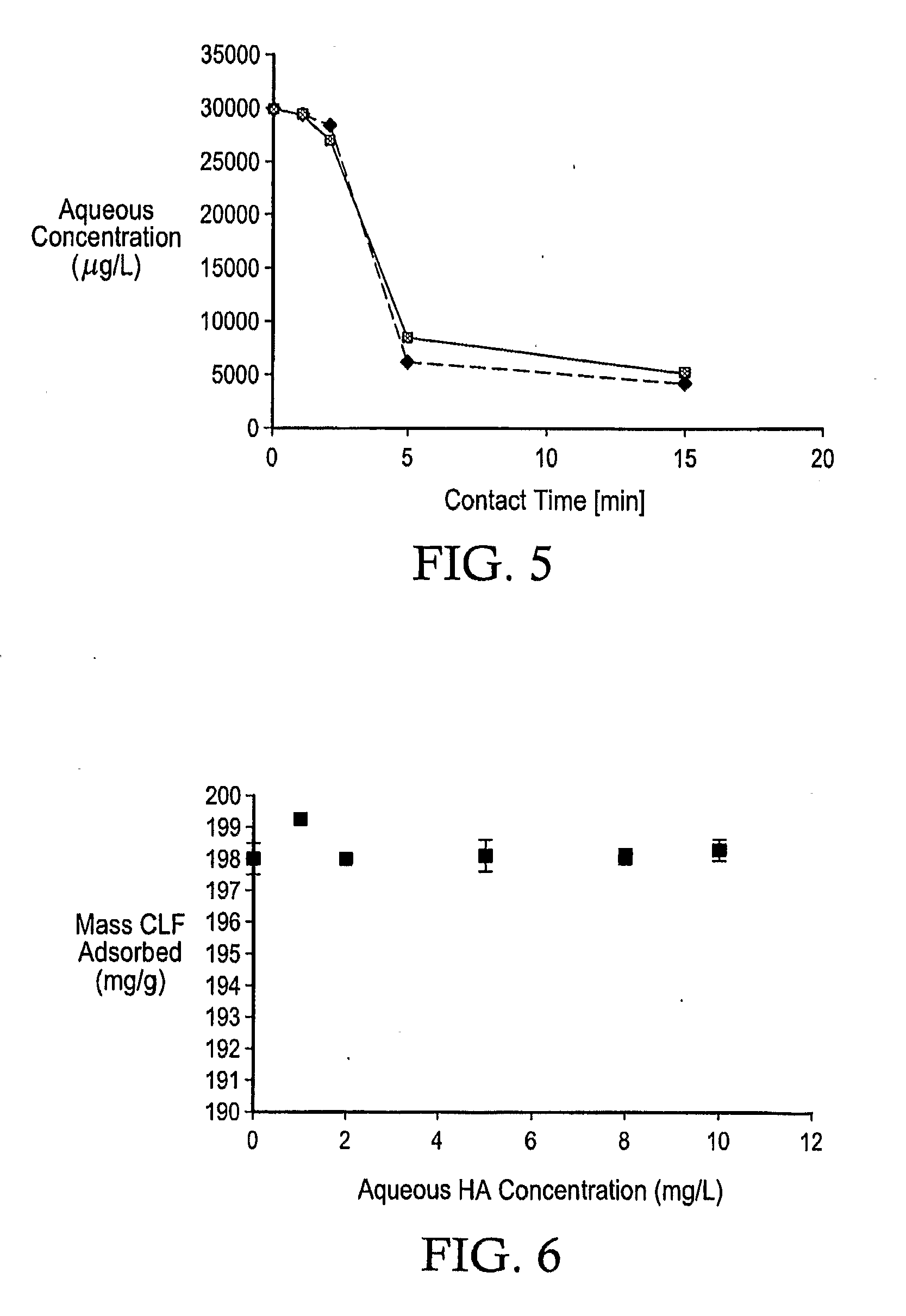Methods and devices for the removal of organic contaminants from water
a technology of organic contaminants and methods, applied in water/sewage treatment by oxidation, other chemical processes, separation processes, etc., can solve the problems of unfit water supply for use, low capacity, and harmful to human health
- Summary
- Abstract
- Description
- Claims
- Application Information
AI Technical Summary
Benefits of technology
Problems solved by technology
Method used
Image
Examples
examples
[0053]Silicalite-1 was obtained from Union Carbide (Houston, Tex.). The properties of the silicalite-1 were: pore volume=0.21 cm3 / g, large dimensions of pores=5.5×5.6 Å, SiO2 / Al2O3 ratio>1000, and hydrophobicity (by TGA analysis)=0.92 (Erdem-Senatalar et al., 2004a) The dealuminated zeolite Y (DAY) was from Zeolyst (Kansas City, Kan.), and had pore volume 0.38 cm3 / g, large dimensions of pores=7.4 Å, SiO2 / Al2O3 ratio 80, and hydrophobicity (by TGA analysis)=0.89. Chloroform (CLF) and trichloroacetic acid (TCAA) were purchased from HACH Company (ACS grade, Loveland, Colo.) and Sigma-Aldrich (St. Louis, Mo.), respectively. All water used was purified by a Barnstead ROPure ST / E-pure water system (Barnstead / Thermolyne, Dubuque, Iowa).
[0054]To obtain the isotherm data, the concentrations of the initial DBP solutions were varied with constant sorbent / liquid ratios (0.2 g sorbent in 40 mL solution). Adsorption was allowed to proceed for 24 hour contact times on an orbital shaker table at ro...
PUM
| Property | Measurement | Unit |
|---|---|---|
| Pore size | aaaaa | aaaaa |
| Permeability | aaaaa | aaaaa |
| Hydrophobicity | aaaaa | aaaaa |
Abstract
Description
Claims
Application Information
 Login to View More
Login to View More - R&D
- Intellectual Property
- Life Sciences
- Materials
- Tech Scout
- Unparalleled Data Quality
- Higher Quality Content
- 60% Fewer Hallucinations
Browse by: Latest US Patents, China's latest patents, Technical Efficacy Thesaurus, Application Domain, Technology Topic, Popular Technical Reports.
© 2025 PatSnap. All rights reserved.Legal|Privacy policy|Modern Slavery Act Transparency Statement|Sitemap|About US| Contact US: help@patsnap.com



